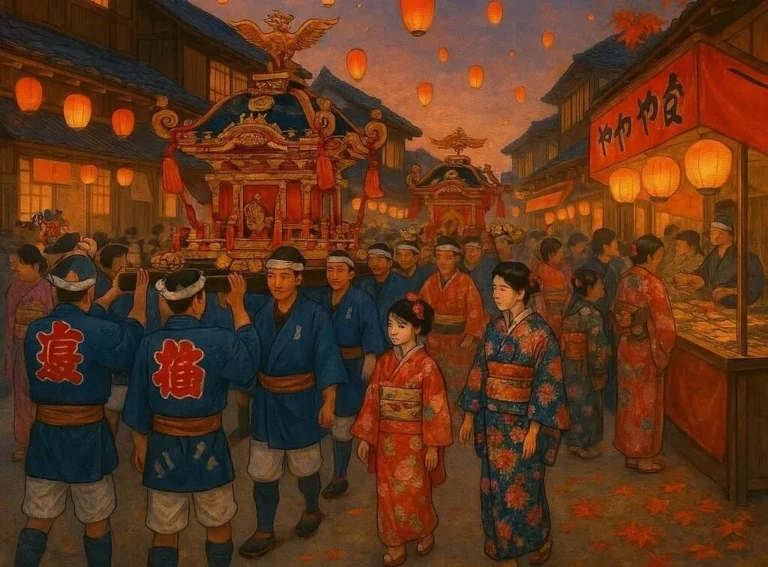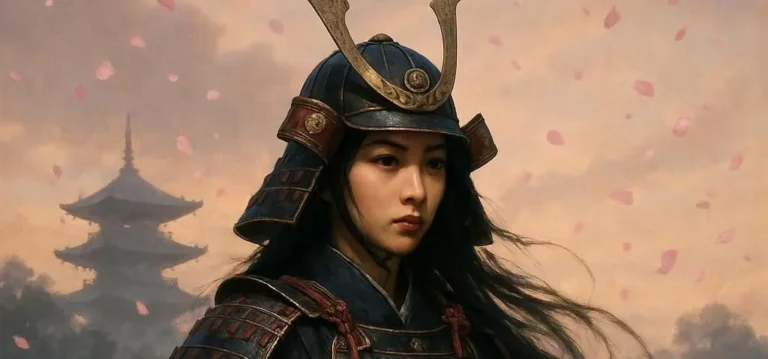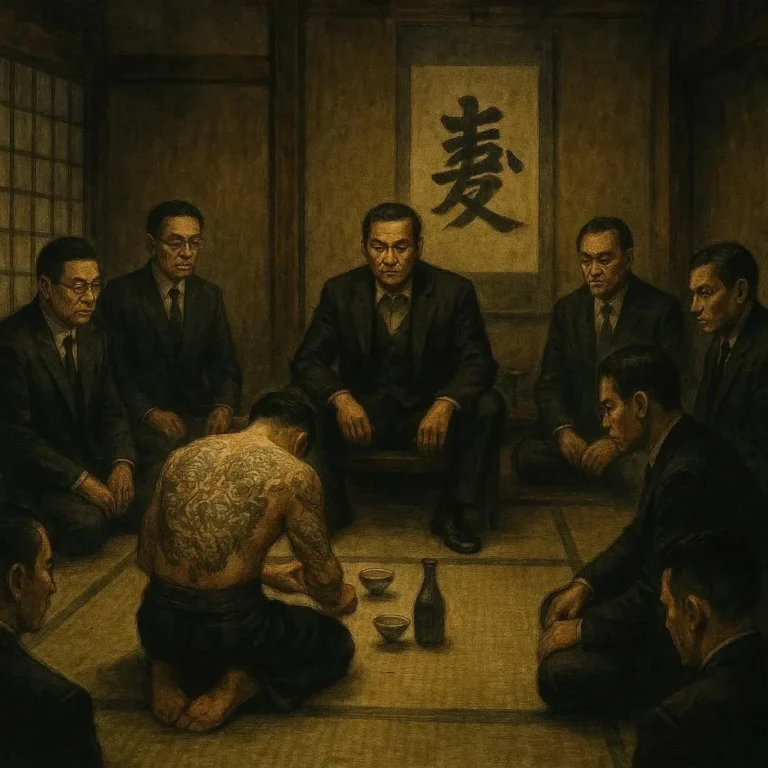506 views Ancient Stories: Folklore and Myths That Still Inspire Japan
Japan, a land of vibrant culture, rich history, and timeless traditions, has always been deeply rooted in its ancient folklore and myths. These stories, passed down through generations, are more than just mere tales; they are the foundation of Japan’s identity, shaping its art, religion, and way of life. From the creation myths of the world to the legends of supernatural creatures, Japan’s folklore continues to captivate and inspire people around the globe. In this blog post, we will delve into some of the most enduring stories from Japanese folklore and explore how they remain relevant in modern times.
The Birth of Japan: The Sun Goddess and the Creation Myth
One of the most foundational myths in Japanese folklore is the story of the creation of the world and the birth of the Japanese islands. According to the Kojiki, one of Japan’s oldest historical records, the world was created by a succession of primordial deities known as the Kami. These divine beings emerged from a primordial void and set about creating the land, sea, and sky. The most important of these deities was Amaterasu, the Sun Goddess, who is said to be the ancestor of the Japanese Imperial family.
The myth tells us that Amaterasu was born from the tears of the god Izanagi as he purified himself in a river after escaping the underworld. She was given control over the luminescent heavens, while her brother Susanoo was tasked with ruling the storm. The story of Amaterasu is not just a creation myth; it is a powerful symbol of light, purity, and divine authority. To this day, Amaterasu is revered in Shinto shrines across Japan, and her legacy can be seen in the way the Japanese imperial family traces its lineage back to her.
The Spirit World: Yokai and the Supernatural
Japanese folklore is brimming with tales of Yokai, a term that encompasses a wide range of supernatural creatures and spirits. These beings can be benevolent, malevolent, or neutral, and they often serve as explanations for natural phenomena, human behavior, or unexplained events. From the mischievous Kitsune (fox spirits) to the eerie Tengu (bird-like humanoids), Yokai have captivated the imaginations of people for centuries.
One of the most famous Yokai is the Oni, a fearsome demon often depicted with red or blue skin, sharp horns, and a large club. According to legend, Oni are the spirits of people who have lived wicked lives and are doomed to wander the earth in search of redemption. These creatures are often associated with disease, disaster, and bad luck, and are the subject of many cautionary tales aimed at teaching moral lessons.
On the other hand, the Tanuki, a small, rotund creature resembling a raccoon dog, is a beloved figure in Japanese folklore. Known for its mischievous antics and its ability to shape-shift, the Tanuki is often depicted in art and literature as a symbol of good fortune and prosperity. Its popularity endures in modern times, with statues of Tanuki adorning gardens and temples across Japan.
The Tale of Urashima Taro: A Journey to the Underworld
One of the most iconic stories in Japanese folklore is the tale of Urashima Taro, a young fisherman who rescues a turtle and is rewarded with a visit to the underwater palace of the Sea Goddess, Otohime. The story goes that Urashima Taro lives a life of luxury in the palace, but he eventually becomes homesick and decides to return to his village. Before leaving, Otohime gives him a small box as a parting gift, warning him never to open it.
Upon his return, Urashima Taro finds that many years have passed, and his village is unrecognizable. Overcome with curiosity, he opens the box, releasing a mist that causes him to age rapidly. He dies soon after, his once youthful body turned to dust. The moral of the story is a timeless one: curiosity can lead to destruction, and some secrets are better left unexplored.
This tale has been retold in various forms of Japanese art, from traditional Noh theater to modern animated films. It continues to resonate with audiences, serving as a reminder of the importance of respecting the unknown and honoring the wisdom of those who come before us.
The Legend of Momotaro: The Peach Boy
Another beloved story in Japanese folklore is the legend of Momotaro, the Peach Boy. According to the tale, Momotaro is born from a giant peach that floats down a river to a childless elderly couple. The couple discovers the peach and, upon cutting it open, find a baby boy inside. They adopt him as their own, and he grows up to be strong and kind.
When Momotaro learns that a group of demons is terrorizing a nearby island, he decides to confront them. Along the way, he befriends a dog, a monkey, and a pheasant, who agree to help him on his quest. Together, they defeat the demons and return home as heroes. The story of Momotaro is a classic tale of bravery, friendship, and the triumph of good over evil.
The legend of Momotaro has been passed down for generations and remains a popular children’s story in Japan. It is often used to teach young people the importance of courage and loyalty, and its themes of perseverance and teamwork continue to inspire people of all ages.
The Story of Yuki-Onna: The Snow Maiden
One of the most haunting tales in Japanese folklore is the story of Yuki-Onna, the Snow Maiden. According to legend, Yuki-Onna is the spirit of a young woman who perished in the snow during a fierce storm. Her spirit is said to appear to travelers during heavy snowstorms, luring them to their deaths with her otherworldly beauty and cold embrace.
The most famous version of this story tells of a woodcutter who is caught in a snowstorm while returning home from work. Taking shelter in a small cabin, he is visited by Yuki-Onna, who appears to him as a beautiful but pale woman. She tells him that he will never see his family again, but the woodcutter is able to survive the encounter by hiding under a thick blanket. When the storm passes, he returns home safely, never forgetting the chilling encounter.
The tale of Yuki-Onna has been adapted into numerous films, plays, and literary works, and continues to captivate audiences with its themes of beauty, danger, and the supernatural. It serves as a reminder of the power and mystery of nature, and the enduring fascination with the unknown that is at the heart of so much Japanese folklore.
The Power of Folklore in Modern Japan
Folklore and myths continue to play a significant role in modern Japanese culture. From the Shinto shrines dedicated to ancient deities like Amaterasu, to the festivals that reenact the battles between good and evil, the stories of old are alive and well in contemporary Japan. These tales are not just relics of the past; they are living, breathing narratives that continue to inspire artists, writers, and thinkers.
In the world of anime and manga, Japanese folklore has found a new global audience. Series like Studio Ghibli’s Spirited Away and Naruto draw heavily from traditional myths and legends, introducing these stories to a new generation of fans around the world. The influence of Japanese folklore can also be seen in literature, where authors like Haruki Murakami seamlessly blend elements of the supernatural and the mundane in their stories.
Folklore also plays a crucial role in Japan’s tourism industry. Visitors from all over the world flock to see the shrines and temples dedicated to the gods of old, and to participate in traditional festivals that bring these stories to life. Whether it’s the Golden Pavilion of Kinkaku-ji Temple or the serene gardens of the Fushimi Inari-Taisha shrine, every corner of Japan is steeped in the history and mythology of its ancient past.
Conclusion
In conclusion, the folklore and myths of Japan are more than just interesting stories; they are the beating heart of the nation’s culture and identity. From the creation myths of the world to the tales of supernatural creatures, these stories have shaped Japan’s art, religion, and way of life for centuries. As we continue to move forward in a rapidly changing world, the timeless themes and lessons of Japanese folklore remind us of the enduring power of tradition and the importance of remembering where we come from.
Whether it’s the bravery of Momotaro, the wisdom of the Tanuki, or the haunting beauty of Yuki-Onna, the stories of Japan’s ancient past continue to inspire and captivate us. They remind us that the past is not just a series of events; it is a living, breathing force that shapes who we are today. As long as these stories are told and retold, the spirit of Japan’s ancient folklore will endure, inspiring future generations to explore the rich tapestry of their cultural heritage.







